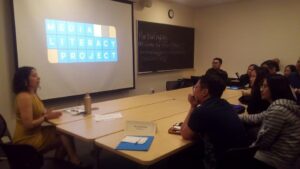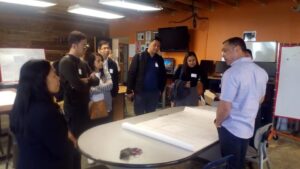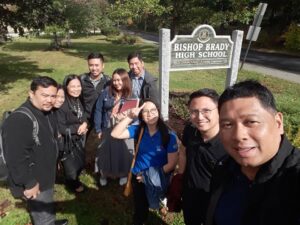The following was written and submitted by Mr. Marco Polo. The author participated in the International Visitor Leadership Program (IVLP) of the U.S. Department of State from September 27 to October 20, 2019. He is an Associate Professor at the Communication and Journalism Department and concurrently the Director for University Advancement of De La Salle University-Dasmariñas in Cavite, Philippines. He is a former two-term national president of the Philippine Association of Communication Educators (PACE) and is a member of the Board of Management of the Asian Media, Information and Communication Center (AMIC).
I have always believed that traveling is one of the best forms of education. Traveling teaches us about the world and about ourselves. We discover destinations, understand cultures and learn about our own idiosyncrasies.
Living in today’s media-saturated environment can be daunting and desensitizing. The barrage of messages we produce, receive and process has led many to zone out or retreat to one’s echo chambers. It has also given rise to made-up news, discord and discontent on social media, manipulation and hyper commercialization in media, and distrust for media and the erosion of democratic institutions. And with the current COVID-19 pandemic another issue that has come out is the rise of information disorder or what we also call ‘infodemic’. This is when people create and share mis- or disinformation about the virus. The battleground has moved to social media and we need to do something about it.

We need to empower one another to be media and information literate. But where do we begin and how do we go about it particularly in my country the Philippines? We have a relatively new K-12 curriculum that has a stand-alone media and information literacy (MIL) subject, some higher education institutions offer it as a subject, but little is done outside of the formal school system. Through one of my professional organizations, the Philippine Association of Communication Educators (PACE), we were tapped by the National Council for Children’s Television (NCCT), an attached agency of the Philippine’s Department of Education (DepEd), to conduct a nation-wide teacher training program on understanding and utilizing media for teaching. In our trainings in various parts of the country, we encountered challenges and difficulties of teachers in integrating MIL in the various core subjects. From the lack of locally relevant and contextually significant resource materials to technical and technological limitations, lukewarm institutional support, and limited pedagogical capabilities, we knew this would be a long struggle.
Realizing the need to develop critical thinking and responsible production and consumption of media texts, a program was conceptualized by the United States Department of State to foster international understanding through the exchange of ideas between the people of the U.S. and the Philippines.
I was fortunate to be invited along with eight other Filipinos to take part in this program that investigated the MIL landscape in the U.S. The program took us across five different states where we met with colleagues and counterparts in education, government and civil society.
Together we learned about the U.S. Federal system and the role of government and non-government affiliated agencies in promoting media literacy education and fact-checking, research and media dynamics in Washington, DC.
We were exposed to the media literacy practices at the high school level as well as interacted with youth-focused media programs and fact-checking organizations in Manchester, New Hampshire.
While visiting various organizations in Kalamazoo, Michigan, we encountered different ways in which they conduct media literacy programs for at-risk youth, marginalized communities as well as those that use visual media and news literacy programs in schools.

In Albuquerque and Santa Fe, New Mexico, we discovered the power of digital storytelling and appreciated a media literacy program that empowered girls and took part in media deconstructing activities. The final leg of the program consisted of a workshop on MIL integration as well as understanding and decoding media bias which was held in Los Angeles, California.
The trip led our group to examine our own MIL curriculum in the basic and even in higher education and made us reflect on how we can creatively and efficiently teach the competencies to fellow teachers and eventually to students in the Philippines.
Throughout the three weeks that I journeyed with colleagues in this program, we experienced a slice of American life. From catching the wildcard baseball game of eventual World Series Champions, the Washington Nationals; watching the musical Cats at the Kennedy Center; and getting ‘lost’ in different cities, taking various modes of public transportation to visit several churches, the many wonderful museums, landmarks and places of interest. The trip also connected us with scholars and icons in our discipline and opened opportunities to meet new friends and reconnect with old ones like former students, colleagues, relatives and classmates, some of whom I last saw over two decades ago. The IVLP was an experience of a lifetime indeed.

As we concluded our IVLP journey we realized the importance of multi-stakeholder engagement and collaboration in promoting and enhancing MIL in the Philippines. We look forward to working on several personal, institutional and network projects to enable our country and our people to better navigate the ever-evolving and globalized media environment. We hope that when we return to the ‘new normal’ the IVLP can continue to create possibilities for citizens of the world to share and learn from each other towards a better society and a sustainable future.
















